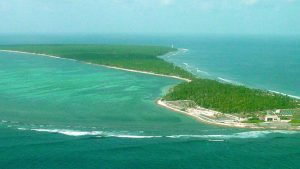India is a hub of the most exotic and beautiful places in the world. One can find all sorts of places to visit, ranging from temples to ancient monuments to places which adorn modern-day architecture. While 71% of the surface of the Earth is covered with water, there are a lot of places to visit which are located on the side of the sea and islands. India boosts of some of the most beautiful island archipelago namely Andaman & Nicobar Island in the Bay of Bengal and The Lakshadweep Islands in the Arabian Sea. Against a backdrop of the cerulean waters of the Bay of Bengal, Andaman Islands sparkle like emerald jewels, thanks to the lush green tropical foliage. Adorned with long stretches of silvery beaches, these islands are a popular destination for a vacation in the middle of nowhere. Most of these islands are a part of the union territory of India and are home to the only Palaeolithic people in the world. While some of these islands have been commercialized and developed as tourism hubs, the rest are uninhabited, away from human interference and exemplify virgin nature. Port Blair, the capital city of Andaman & Nicobar Islands, is the gateway to the archipelago and is connected with various islands via multiple daily ferries. Havelock and Neil Island are some of the most famous islands among tourists and is known for pearly white sands, palm-lined shores and offer some of the best snorkelling and diving options in India. One of world’s most spectacular tropical island systems, Lakshadweep is tucked away at 220-440Kms off the Kerala Coast. The islands offer a precious heritage of ecology and culture. The unique feature of the Islands is its coral reef, making it a pristine leisure spot to come back to. The underwater view at Lakshadweep is kaleidoscopic and breathtaking. Each island is fringed by snow white coral sands. The crystal clear water and the abundant marine life enhance the beauty of these islands. Against the vast expanse of the blue sea, the island look like emeralds. The huge shallow calm lagoon on one side with wall like reef made of marine live coral boulders blocks the incoming swells of the outer sea.
+91 9610450077/ +91 6378442633
cocoonholidayspl@gmail.com


